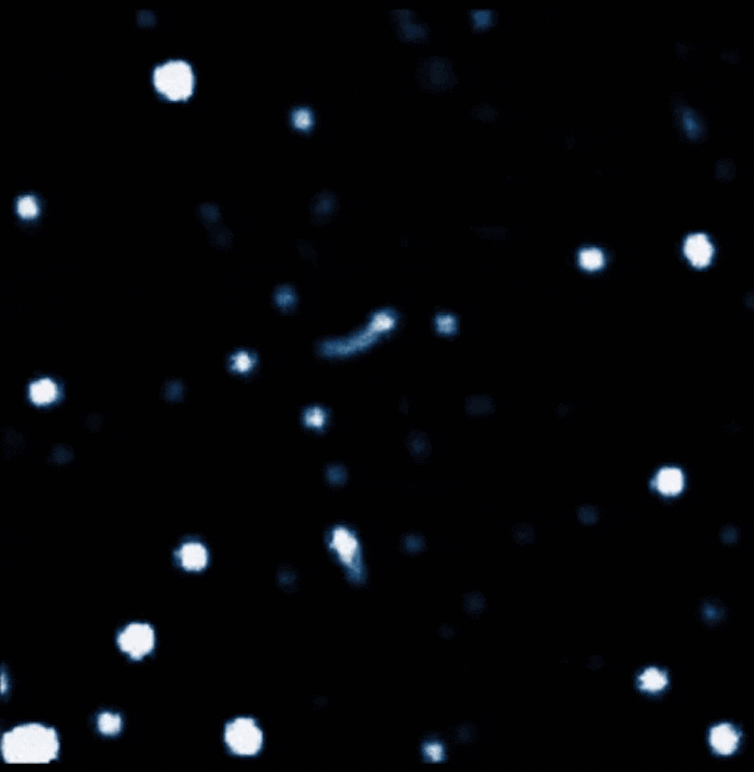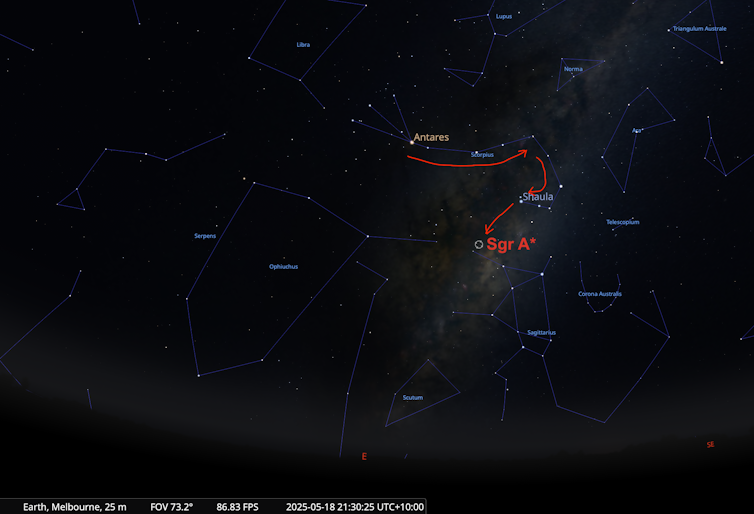Table of Contents
At the center of the Milky Way is a supermassive black hole called Sagittarius A*. It’s approx 27,000 light years of the earth and 23.5 million kilometers in diameter.
In a world first, a team of astronomers led by Florian Peißker from the University of Cologne, Germany, has discovered a binary star system orbiting this black hole.
The system is known as D9. Its discovery, announced in a new paper published today in Nature Communications, sheds light on the extreme environment at the center of our Milky Way Galaxy.
It also helps explain a long-running cosmic mystery about why some stars hurtle through space much faster than others.
What is a binary star system?
A binary star system simply consists of two stars orbiting each other.
Our sun is not part of a binary star, and that’s a good thing: we wouldn’t want another star wandering through our solar system. It would disrupt the Earth’s orbit; we would bake or freeze.
Show observations about two thirds of the stars in the Milky Way are single stars, and the rest are part of a binary star system or multiple star system. Larger stars are more likely to be paired.
Binary star systems are useful to astronomers because their motion contains a wealth of information. For example, the speed and distance of the orbits tell us about the mass of the stars.
For a single star, on the other hand, we usually calculate its mass based on how bright it is.
A technically challenging discovery
Although scientists have previously predicted that binary star systems exist near supermassive black holes, they have never discovered one.
This recent discovery was technically quite challenging. We can’t simply look at the system and see two stars because it’s too far away. Instead, the astronomers used the European Southern Observatory’s Very Large Telescope to measure the shift in starlight – known as the Doppler effect. This showed that the light from the stellar system showed a characteristic fluctuation, which indicated an orbit.
But the team did much more than that.
Because double stars contain a wealth of information, astronomers were able to calculate that this particular system is about 2.7 million years old. That means these stars first ignited 2.7 million years ago.
They were probably not born in the extreme environment of the black hole, so unless they only recently entered this neighborhood, they have survived in their current environment for about a million years.
This in turn tells us something about the black hole’s ability to disrupt stars in its orbit. Black holes are mysterious beasts, but clues like these help us unravel their nature.

Circling a black hole
The situation that the astronomers discovered is quite well known.
Think of the moon: it revolves around the earth, and the earth and the moon revolve together around the sun. Because gravity is a force of attraction, it can pull multiple celestial bodies into complicated orbits. The complexity of this scenario inspired the recent book and Netflix series, The three-body problem.
If they are complicated, could the whole thing drift apart? The Moon-Earth-Sun arrangement is stable because two of the three bodies – the Earth and the Moon – are much closer together than the other body, the Sun. The moon and Earth are so close that, as far as the sun is concerned, it is essentially a two-body system, which is stable.
But if all three bodies interact, the system can fall apart. It’s even possible that two of the bodies do eject the third body completely.
Stars with unusual speed
This mechanism likely explains a cosmic mystery: hypervelocity stars.
Most stars in the night sky are in a typical, nearly circular orbit around the center of our Milky Way. Orbital speeds are about 200 kilometers per second: very fast on Earth, but nothing special in space.
However, since 2005 we have discovered about twenty hyperspeed starsthat race through our Milky Way at more than 1,000 kilometers per second. How?
Our best current idea is that hypervelocity stars were once part of a binary system orbiting our supermassive black hole. Over time, the stars came too close to the black hole, creating a complicated orbit. In the chaos, as a black hole ruled the roost, one of the stars was ejected. It escaped to the outer Milky Way, where we see it as a superfast star.
Finding the Hypervelocity Factory
It’s an interesting theory.
Theoretical calculations show that the mechanism works and that the speeds are approximately correct. Observations show that many of the known stars appear to be shooting away from the galactic center at high speed, adding to the theory. But how else can we test this idea?
An obvious way is to look for binary stars around our supermassive black hole.
Astronomers have been keeping a close eye on our galactic center for decades. It’s not that hard to find it in the night sky, as you can see in the image below.

Here are two reliable methods to find Sagittarius A*. First, find Antares (bright and red), the center of the back of Scorpio, and then follow the scorpion’s body to the tip of the tail, which is close to the black hole. Alternatively, buy a good night sky app on your phone; they are great.
In the context of these theories, this recent discovery is very important. Astronomers have discovered a binary star system around our supermassive black hole. An important piece of the hyper-speed puzzle is falling into place.![]()
(Author: Luke BarnesPhysics teacher, University of Western Sydney)
(Disclosure Statement: Luke Barnes does not work for, consult with, own shares in or receive funding from any company or organization that would benefit from this article, and has disclosed no relevant affiliations beyond their academic appointment)
This article is republished from The conversation under a Creative Commons license. Read the original article.

